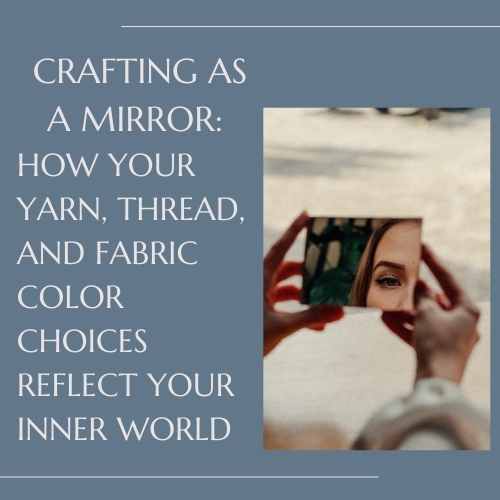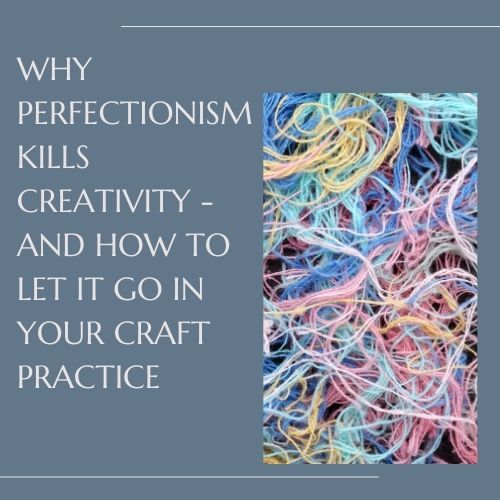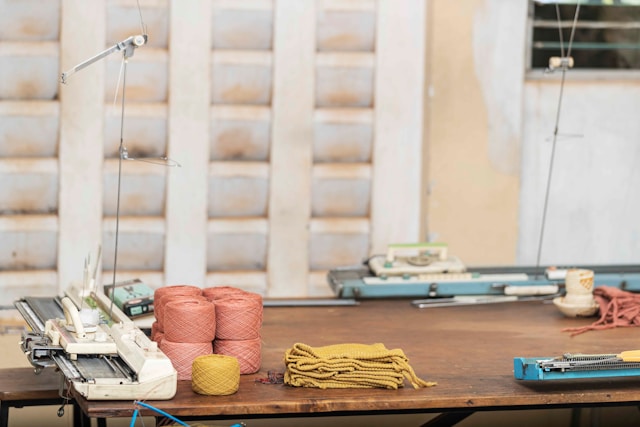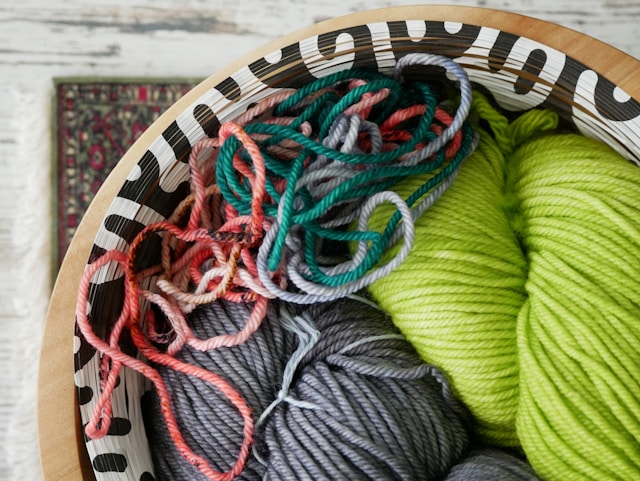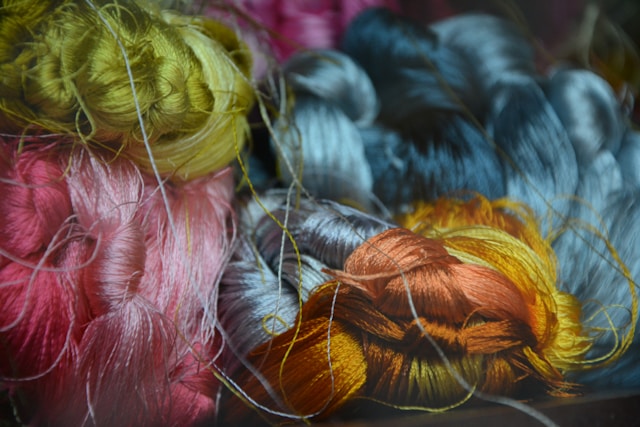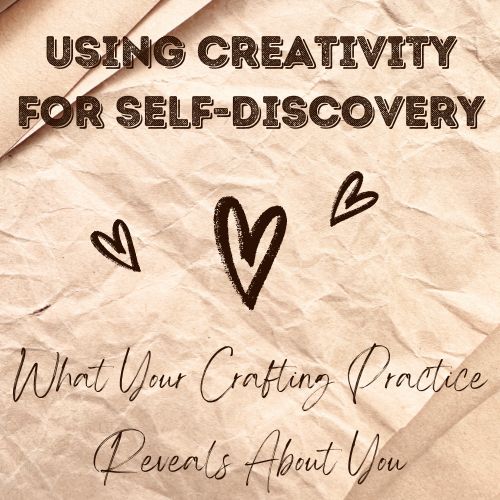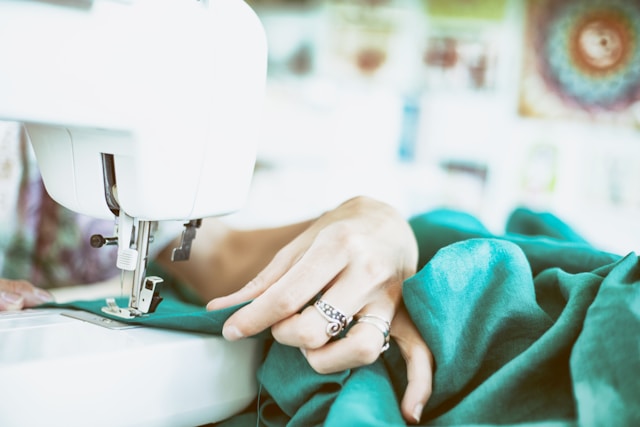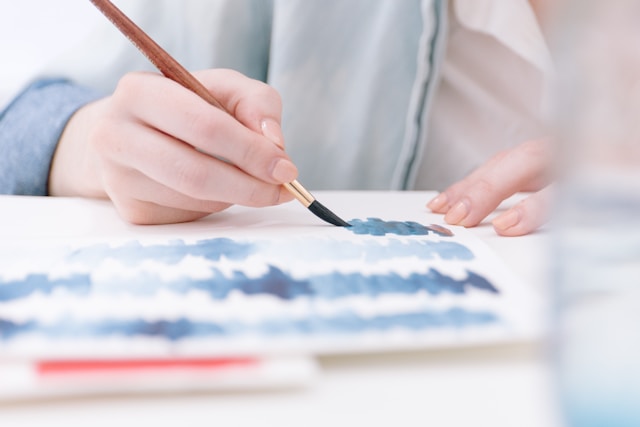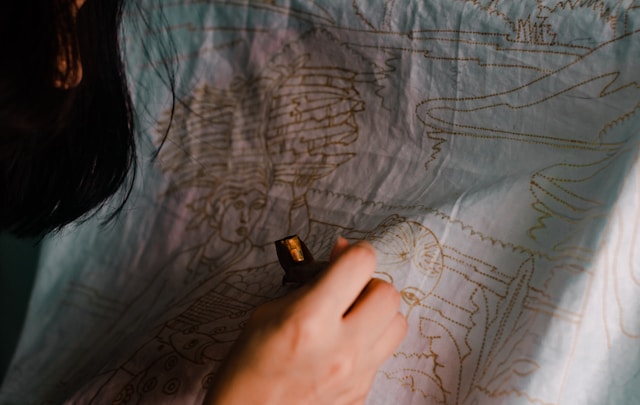Have you ever stopped to consider why you’re drawn to certain colors in your fiber arts projects? Whether you instinctively reach for bold, saturated hues or soft, muted neutrals, your color choices can reveal more than just aesthetic preferences—they can be a reflection of your emotions, mental state, and even deeper patterns in your life.
Color has long been recognized as a powerful emotional and psychological tool in both art therapy and traditional color theory. The colors you work with in your craft can provide insight into your current mood, personality, and subconscious feelings. When we slow down and bring intention to our creative choices, we can use color not just to make something beautiful, but to better understand ourselves.
In Craft to Heal, we explore how fiber arts can be a tool for mindfulness, self-discovery, and emotional well-being. Understanding the role of color in your craft can help you tap into deeper self-awareness and make the most of the craft you already love.
🧶 Want to learn more? Click here to join Craft to Heal.
The Psychology of Color in Fiber Arts
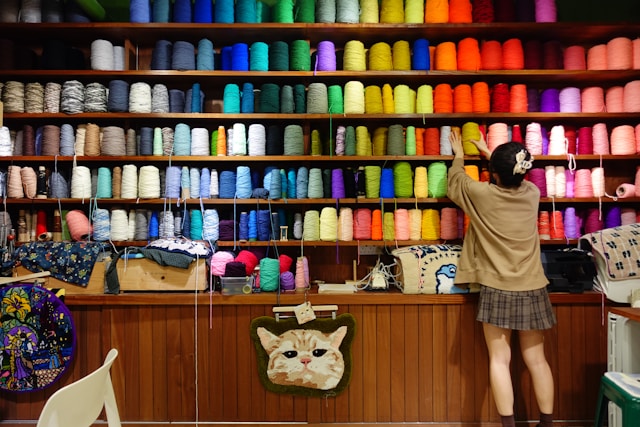
Colors are more than just visual stimuli—they evoke emotional responses, influence our mental state, and can even shift the way we experience creativity. While color psychology offers common associations, these meanings can vary across cultures, personal experiences, and even individual memories. A color that feels calming to one person might feel energizing or even unsettling to another. The key is to notice your own unique emotional responses to color and how they show up in your creative work. Here’s a look at how different colors often connect to mood, emotions, and even mental health:
🔴 Red – Passion, energy, intensity. Red is stimulating and can evoke strong emotions, from love to anger. It’s often used in craft projects by those who feel bold and confident—or those seeking to ignite motivation and push through creative blocks.
🟠 Orange – Warmth, enthusiasm, creativity. Orange is associated with playfulness and risk-taking, making it an excellent color to introduce when you want to break out of a creative rut.
🟡 Yellow – Optimism, joy, clarity. Yellow has an uplifting quality, but in excess, it can also evoke restlessness. If you find yourself avoiding yellow, ask yourself if you’re resisting joy or struggling with anxiety.
🟢 Green – Balance, growth, renewal. Green is naturally calming and is often used in art therapy for its grounding effect. If you’re drawn to earthy greens, you might be seeking stability or healing.
🔵 Blue – Peace, introspection, calm. Blue has been shown to lower stress levels and encourage a sense of inner reflection. People with anxiety often feel drawn to blue tones for their soothing qualities.
🟣 Purple – Creativity, depth, spirituality. Purple is often linked to self-expression and intuition—if you naturally gravitate toward purples, you may be in a period of deep thought or creative expansion.
⚫ Black – Protection, depth, emotional processing. Black absorbs all light, making it a color associated with introspection and processing deep emotions. Many people drawn to black are working through grief, transformation, or self-protection.
⚪ White – Simplicity, new beginnings, clarity. White represents fresh starts, and people incorporating a lot of white into their craft may be seeking mental clarity or emotional space.
🌈 Multicolored / Variegated Colors – A desire for spontaneity, energy, or emotional expression. Multicolored projects often reflect an openness to chaos and movement—or a longing to bring more vibrancy into life.
Color choices are deeply personal and fluid—you may notice shifts in your palette depending on your emotional state, life events, or even seasonal changes. If you suddenly start gravitating toward new colors, it might be worth reflecting on what has changed within you.
Solids vs. Prints: The Role of Pattern in Creative Expression
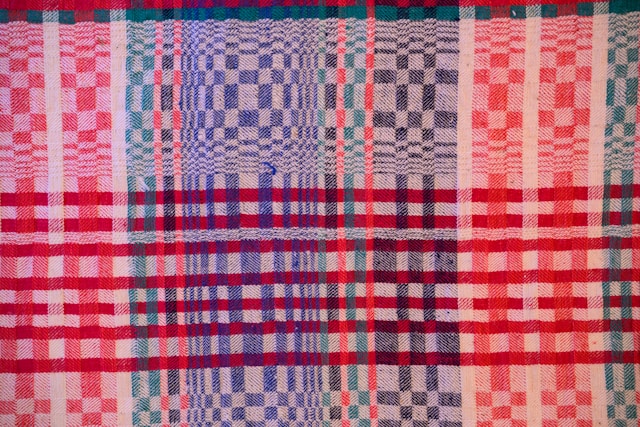
Beyond color, the way you use patterns in your fiber arts can also reflect something deeper. Do you prefer solid, monochrome pieces, or do you love intricate colorwork and busy patterns?
What Solid Colors Might Say About You:
✔ You may crave simplicity and structure in a chaotic world.
✔ You may appreciate clarity—focusing on one color at a time allows you to process emotions more cleanly.
✔ If you find yourself using only neutrals, consider whether you’re playing it safe in your creativity or avoiding emotional expression.
What Variegated Yarn or Patterned Fabrics Might Say About You:
✔ You may thrive on variety and movement—enjoying the excitement of changing colors and complex designs.
✔ You might be someone who likes a challenge, preferring visually engaging projects.
✔ If your patterns feel overwhelming, it could be a sign that you’re taking on too much at once in life and need to slow down.
By paying attention to both color and pattern choices, you can begin to recognize how your craft mirrors your inner world. Are you sticking to predictable colors and patterns because they feel safe? Are you craving more vibrancy and spontaneity? Bringing mindfulness to these choices allows you to use fiber arts as a tool for self-discovery and emotional well-being.
Using Color Intentionally: A Self-Reflection Exercise
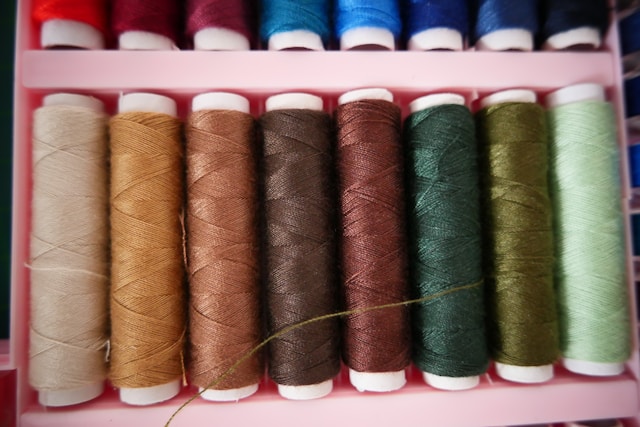
Color is a powerful but often subconscious part of creativity. By bringing awareness to the colors you choose in your fiber arts projects, you can start to uncover deeper patterns in your emotions, preferences, and even your personal growth.
Step 1: Pause and Observe Your Color Choices
Before you begin your next project, or even as you’re selecting yarn, thread, or fabric, take a moment to reflect:
- Why am I drawn to this color today? Does it match my mood, or am I seeking a feeling that this color provides?
- How does this color make me feel when I look at it? Does it bring a sense of calm, excitement, nostalgia, or something else?
- Is this a color I always use, or is it new for me? If it’s familiar, does it feel comforting or repetitive? If it’s new, what inspired the change?
- If I challenged myself to use an unfamiliar color, what emotions might that bring up? Would I feel energized, uncomfortable, or inspired?
Step 2: Experiment with New Color Approaches
Once you’ve reflected on your usual tendencies, consider stepping outside of your comfort zone. Try one of these small but meaningful shifts:
✔ Reverse Your Palette – If you always work with cool tones like blues and greens, try leaning into warm reds and oranges. Notice how it feels different to work with colors associated with energy and warmth.
✔ Use a Color You Normally Avoid – If there’s a color you never reach for, introduce a small amount of it into your project. Pay attention to any emotions or memories it stirs up.
✔ Create an Emotion-Based Color Palette – Instead of choosing colors based on aesthetics alone, select them based on how you want to feel. Do you need calm? Go for blues and greens. Want to boost your energy? Try yellows and oranges.
✔ Work with Color Blindly – Without overthinking, grab yarn or fabric without looking, and challenge yourself to make something with whatever colors you pull. This removes the pressure of making “perfect” choices and lets intuition take over.
✔ Journal About the Process – After finishing a project, write down what colors you used and why. Were they comforting, energizing, or surprising? Did your mood shift while working with them?
Color is deeply personal, and bringing more mindfulness to your choices can help you understand not just your artistic instincts but also your emotional landscape. By experimenting with different palettes and reflecting on what they mean to you, you can use fiber arts as a tool for self-discovery and emotional well-being.
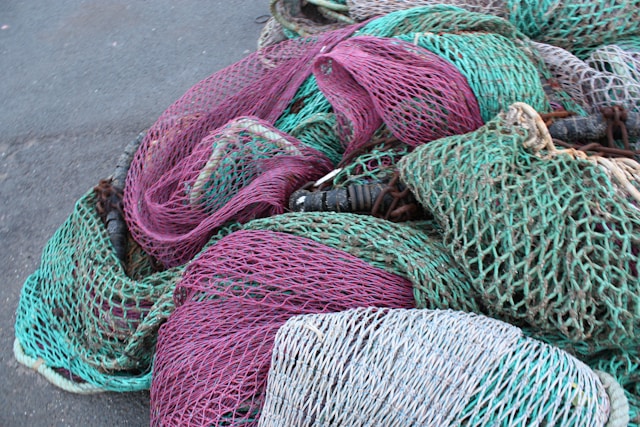
Craft to Heal: Exploring the Meaning in Your Creative Choices
The way we create is deeply tied to how we feel, think, and move through the world. When we bring intention to our craft, we can use it as a mirror—helping us recognize patterns in our emotions, mental health, and self-expression.
Craft to Heal is a workshop series designed for fiber artists who want to deepen the emotional and psychological benefits of their craft. Through exercises like color exploration, mindful making, and creative self-reflection, we explore how fiber arts can be used not just for creativity—but for self-understanding and healing.
🧶 Want to learn more about using your craft as a tool for self-discovery? Click here to join Craft to Heal.
